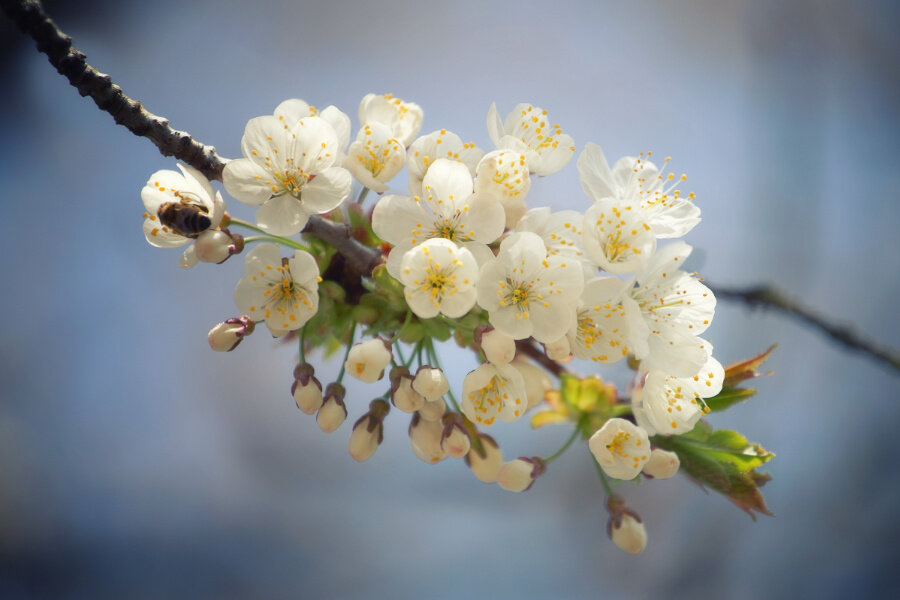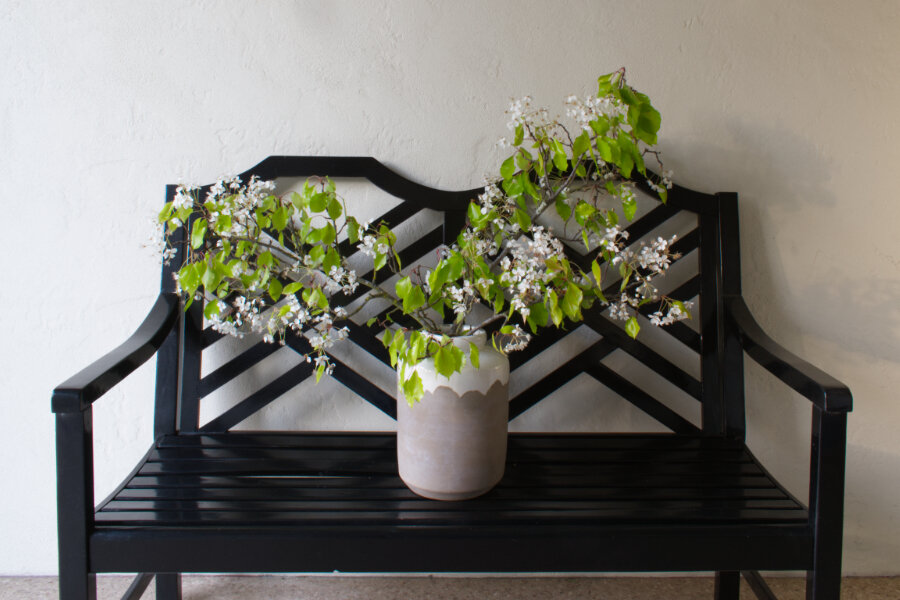How to force spring flowering branches to bloom indoors during winter
It’s the time of year when winter may be dragging on still and we’re more than ready for some spring weather. If that’s not a realistic expectation though in your neck of the woods, here’s a suggestion for the next best thing (besides a tropical vacay): Bring some of spring indoors!
Displaying flowering branches do just that. Whether it’s forsythia, quince, or spring-flowering fruit tree branches like ornamental plum or cherry, putting together a floral display with these spring harbingers can provide the mood lift we sometimes need when the days are gray and dreary, and we’re still spending more time indoors than we’d like. (Full disclosure though, it’s been in the 70s for a couple weeks now in Napa and one of the driest Februarys on record. Don’t hate! :)
Forcing branches to flower
Forcing - refers to the process of getting your spring-flowering branches to bloom early. Essentially, by cutting them and bringing them indoors, we’re tricking them into thinking it’s spring.
So if your fruit trees aren’t yet flowering and you’d like to cut some for your indoor spring-during-winter floral display, the main requirement is that flowering trees and shrubs need about 6 weeks of cold weather to set flower buds. If that’s the case, and you’re probably well aware if it’s been 6 weeks or more of sweater weather, then it should be safe to harvest some branches for indoor flowering.
How to harvest flowering branches for forcing
Get a sharp pair of pruners and cut desired branches. Do pay attention to where you’re cutting and how. Make cuts that are just slightly above the node or collar but not so close that you damage the node/collar. Late winter is also an ideal time to prune deciduous trees and shrubs anyway, so go ahead and shape your shrub/tree and remove any diseased, old, crossing or otherwise unwanted branches while you’re out there.
Look for branches with lots of plump flower buds. The difference between flower buds and leaf buds is flower buds are larger and rounder than leaf buds which are smaller and pointed. If you’re not sure, cut a few buds open and check out what’s inside - flowers or leaves.
Immediately place the branches in water.
Under running water in your sink, re-cut the branches at a long angle, about 45 degrees. The reason for doing this under running water is that cut stems can develop air bubbles called embolisms that block their vascular system and consequently, their water uptake. In addition, running water helps wash away released nutrients from the stems that will cause bacterial growth in the vase water. (see next paragraph)
Cut your branches to the desired height – about 2 times the height of your vase is a working guideline
To Smash or not to smash? (the ends of your flowering branches)
So most information online about forcing flowering branches includes instructions to smash the ends of the branch with a hammer. The justification is that it exposes more surface area for water uptake.
I’ve always been skeptical of this theory but without having a specific reason. One of my mantras though is “show me the data!” So I reached out to Dr. Michael Reid, UC Davis Plant Sciences dept. professor emeritus, and an ornamental crop post-harvest technology expert. (I.e. how to treat and care for cut-flowers, foliage, and potted plants so they last as long as possible).
I can’t resist quoting him, so here goes: “I don't think that there's any controversy among scientists, although I know bashing stems is still a popular sport among florists. I used to tell folks that bashing stems was fine if they needed to take out their aggressions, but don't even believe that any more.” (too funny!)
Dr. Reid goes on to explain that “For a great majority of flowers, growth of bacteria and fungi in the vase solution and at the cut end of the stem is the most common cause of shortened vase life. The microbes themselves, and biofilms that they produce block the tiny pores in the vascular system that are essential to movement of water. Cutting the stems releases proteins, carbohydrates, and other cell contents that are food for those microbes. That's why vase solutions should contain biocides to prevent growth of bacteria, fungi, and yeasts. As you can imagine, bashing the stem releases a lot more of those nutrients, and also provides crevices where microbes may be sheltered from the activity of biocides.”
Dr. Reid’s “biocide” solution is a simple one: add a tiny amount of household bleach to your vase water to inhibit bacterial and fungi growth, so your branches (and cut flowers) last longer.
Household bleach vase water recipe: 3/4 of a teaspoon bleach added to 1 gallon of water. (This approximates a 50 ppm solution of 1 ml of bleach per liter of water for those using metric)
So I think that myth has been definitely settled. Don’t smash the ends of your branches! (or cut flowers!)
Storage & display of your forced flowering branches
Keep your branches in a cool area of the house if possible (60 to 65 degrees)
Try to keep them humidified. Low humidity can cause buds to dry and fall off.
Mist them periodically or place next to a humidifier. Avoid keeping them near a heating vent etc.
Keep them out of direct sunlight as much as possible - it can also cause bud die off.
Do keep them in bright but indirect sunlight to encourage opening.
Change the vase water every few days with a new bleach water solution or as needed when the water starts to discolor
Then sit back and enjoy watching the buds on your branches gradually swell and bloom. This can take a from 1 week to up to 5 weeks depending on species, with most being in the 2 to 3 week range. Once open, they should last for at least a week for you to enjoy.
By cutting batches of branches each week after the initial 6 week cold dormancy period, you can have an on-going display of flowering branches to bring spring into your home while it’s still winter outside!
Enjoy the post? Pin it for later!







